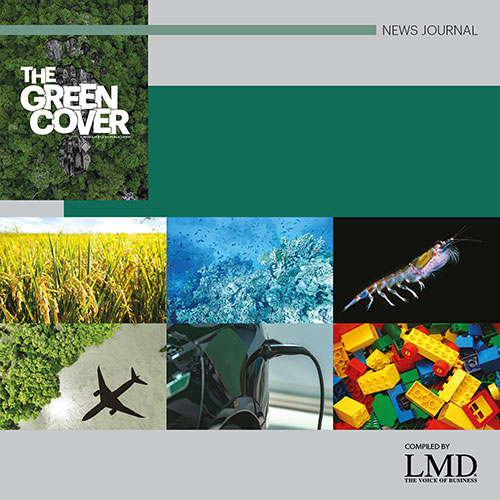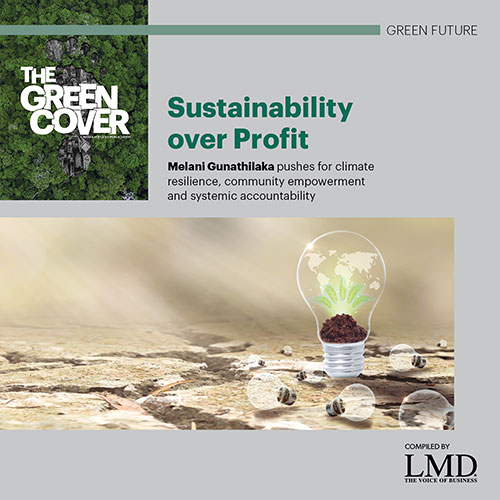PATH TO SUSTAINABLE CITIES
Dr. Iresh Jayawardena discusses the role of green urban planning in biodiversity and ecosystems in cities

Q: How does green urban planning contribute to mitigating climate change and reducing carbon emissions in urban areas?
A: It plays a pivotal role. Incorporating infrastructure such as green roofs, green urban spaces and urban forests can increase carbon sequestration, reduce the effects of urban ‘heat islands’ and promote energy efficiency.
These green elements also contribute to achieving carbon neutrality and help reduce greenhouse gas emissions in urban areas.
Green roofs provide thermal insulation for buildings, resulting in energy savings and emission reductions, fostering low-carbon urban development.
By prioritising green and low-carbon development in urban planning, cities can achieve efficient energy use and emission reduction goals.
Q: What are some key strategies for integrating green spaces into urban planning initiatives?
A: This requires a multidimensional perspective that considers ecological principles, ecosystem services and socioeconomic aspects. Effective strategies for integration could include development of well planned ‘blue-green’ networks.
These allow safe movement for animals and plants, and the circulation of clean water and air, in and around urban settings. Reducing surfaces that impede water infiltration and planting eco-sourced native vegetation can foster more naturally resilient green areas requiring minimum maintenance.
Prioritising public health is another critical strategy. By improving access to green spaces, planners can significantly enhance mental and physical health outcomes for urban communities.
Ensuring equitable access to these spaces is crucial for fostering inclusive urban environments where residents can benefit from restorative and recreational opportunities green spaces provide in cities.
Q: How can green urban planning enhance biodiversity and ecosystem services in cities?
A: Green urban planning strategies focussed on improving biodiversity and ecosystem services in cities are essential to create sustainable, resilient and regenerative urban environments.
Incorporating strategies such as green roofs, urban forests, community gardens, urban agriculture and green corridors can significantly enhance biodiverse and ecologically resilient urban environments.
Green infrastructure is particularly effective in compact urban environments where it promotes planning, development and management of urban green spaces to optimise ecosystem services.

Q: What policies or incentives can be implemented to promote sustainable transportation options, such as cycling lanes and pedestrian friendly infrastructure?
A: A combination of policies and incentives that prioritise sustainable transportation options is essential to create more sustainable and resilient cities. The infrastructure for walking and cycling, and promoting the use of public transport, can effectively encourage adoption of environmentally-friendly modes of transport.
Policies should aim to incorporate integrated urban and transport-oriented planning approaches. This shift can help transition from private motor vehicle-centric mindsets to more sustainable modes of transportation including walking, cycling and public transport.
In countries such as Sri Lanka however, very hot weather and strong sunlight make it difficult for people to opt for walking or cycling regularly.
Implementing incentives such as plug-in electric vehicles (PEVs) can encourage the adoption of sustainable modes of transport. Special lane access, high occupancy vehicle (HOV) dedicated bus and carpool lanes, favourable parking incentives, expanded charging infrastructure, and licensing incentives can promote the use of PEVs.
Q: What lessons can be learned from successful green urban planning initiatives in other countries, and how can these be adapted to suit the Sri Lankan context?
A: By learning from these and adapting key strategies to suit its unique context, Sri Lanka can make significant progress in the promotion of environmentally-friendly and resilient cities.
For example, the creation of safe and connected cycling and pedestrian paths is crucial to promoting active travel and sustainable mobility.
Sri Lanka can draw inspiration from countries that have successfully regenerated urban public spaces with well designed cycling, pedestrian and transit-oriented infrastructure, to enhance safety and encourage walking and cycling.
Using strategies that promote economic growth, and attract private investment in technology and research, Sri Lankan cities can address many environmental challenges and contribute to sustainable urban spaces.
Lessons from successful green roof initiatives in other countries can inform Sri Lanka’s efforts to improve urban green spaces.
By studying how green roofs have been implemented in different geographical and climate contexts, and the benefits they provide, Sri Lanka can encourage the integration of green urban planning initiatives to support developmental efforts.

Q: What challenges and opportunities does Sri Lanka face in implementing green urban planning initiatives, considering factors such as rapid urbanisation, limited land availability and socioeconomic disparities?
A: Sri Lanka has a rich biodiversity and valuable ecosystem services. Green urban planning initiatives can capitalise on these natural assets by incorporating initiatives such as low impact developments and nature-based or ecosystem-based approaches.
However, many urban areas in Sri Lanka also suffer from inadequate physical and social infrastructure including water supply, sanitation, stormwater management and transportation systems. Addressing these deficits whilst simultaneously incorporating green initiatives can pose a significant challenge.
Partnerships with local universities, research institutes, international organisations, development agencies and other countries can provide scientific know-how, financial resources, technical expertise and opportunities for knowledge exchange to support sustainable urban planning efforts.





